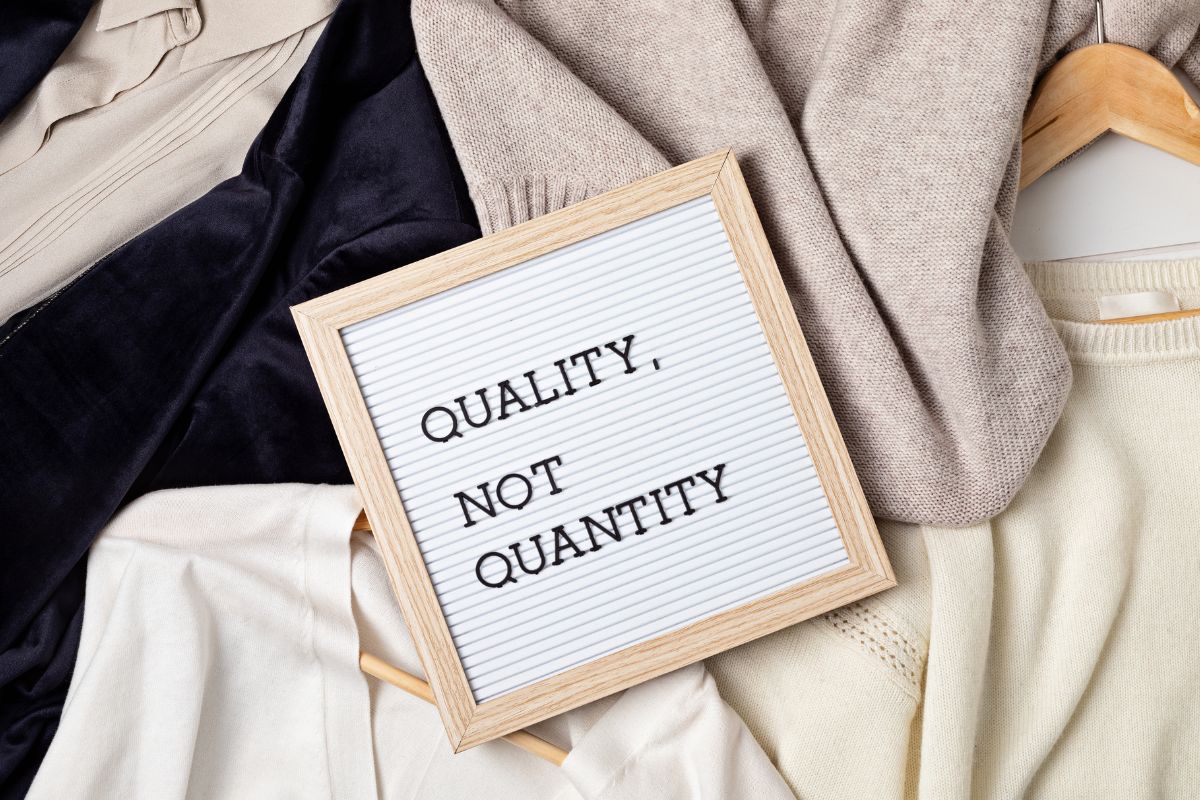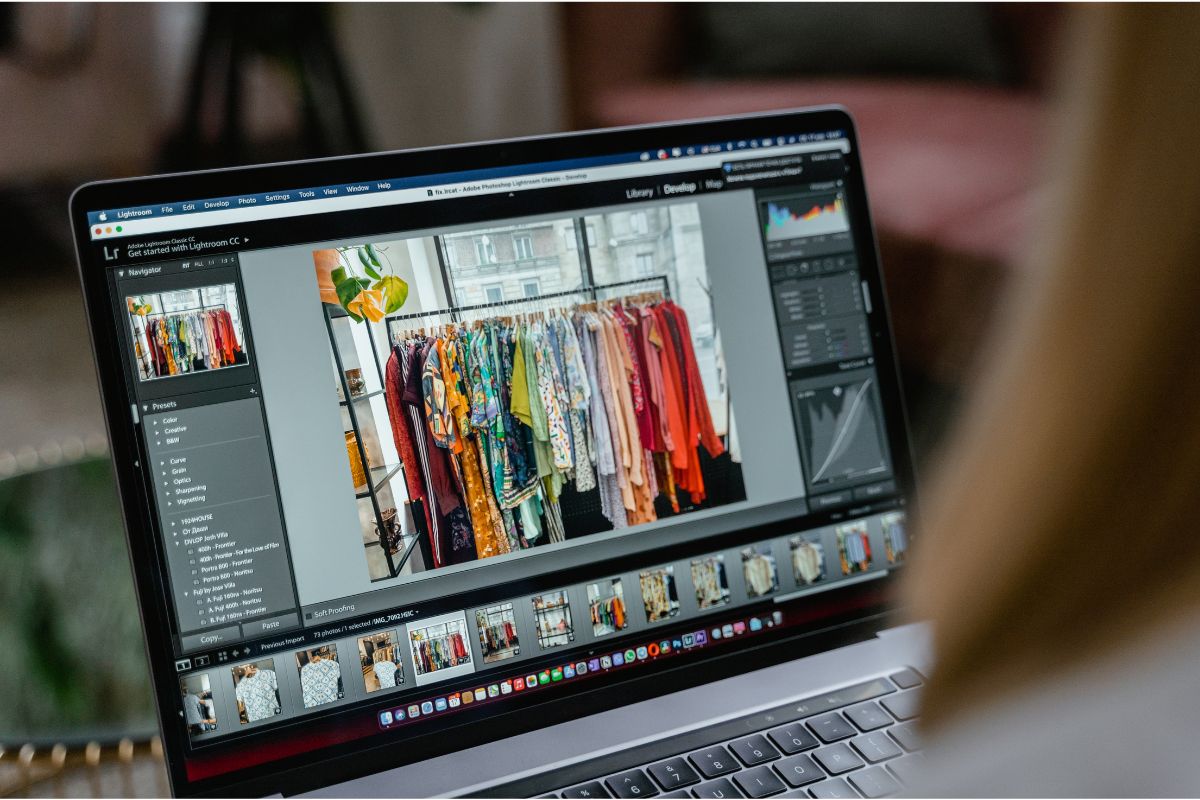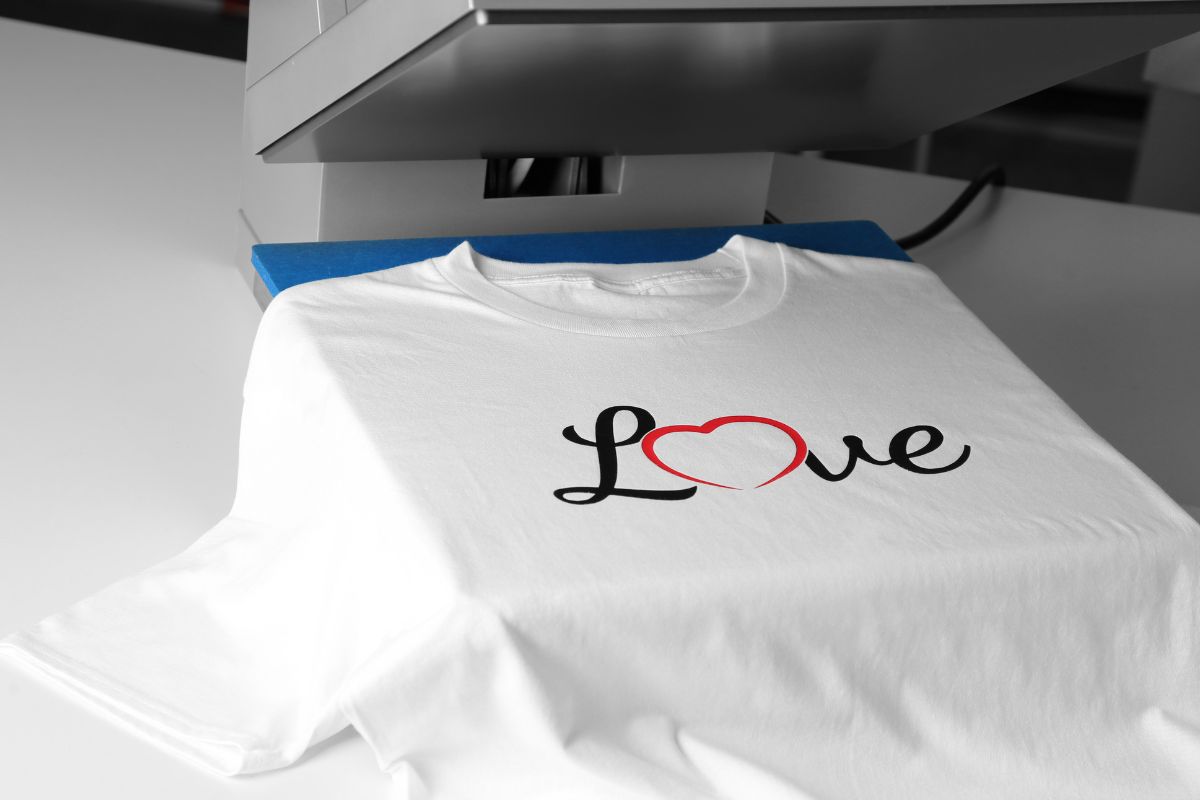Starting a clothing brand can be an exhilarating venture that blends creativity with business acumen. Often fueled by a passion for fashion and design, embarking on this journey involves more than just an eye for style—you’ll need to cultivate a deep understanding of your target market, develop a solid business plan, and effectively brand your products. Establishing a strong foundation from which to grow is paramount, taking into account both the creative and commercial aspects of your business.
Developing your clothing brand requires meticulous planning and a clear vision of what you wish to achieve. Choosing a niche within the vast landscape of fashion helps to focus your efforts and cater to specific consumer needs. To gain traction, understanding consumer behavior and market trends is crucial. Knowledge on how to make a clothing brand attractive online can be particularly beneficial, given the significant shift towards e-commerce in the fashion industry.
With the blueprints of your brand established, it’s time to maneuver through the logistics of product creation—from design to manufacture and distribution. Key to success is the crafting of a unique brand identity that resonates with your target audience. You’ll not only need to consider the aesthetic elements like logo and packaging but also the core values and message your brand conveys. Establishing a brand strategy in the competitive clothing and textile market can significantly influence your potential consumer’s purchase intentions, so it’s essential to strategize thoughtfully.
Conceptualizing Your Clothing Brand
Embarking on the journey of starting a clothing brand requires careful planning and a clear vision. Your brand should be a reflection of unique values and aesthetics that resonate with your desired customer base.
Defining Your Niche and Target Audience
Identify the specific segment of the fashion market that your brand will cater to. Will you be creating high-end evening wear, or are you looking at the casual streetwear market? Once the niche is pinpointed, get to know your target audience. Understand their demographics, their preferences, and what they are missing out on in the current market. Establish if your line will adhere to eco-friendly practices or if you will advocate for cruelty-free materials to appeal to an audience that values ethical production.
Formulating Your Value Proposition
Your value proposition is your promise to your customers. It’s what sets your clothing brand apart from others. Is it the quality, affordability, the innovative designs, or the fact that you use sustainable fabrics? This proposition should echo through your mission statement and be a driving force behind every decision you make. It’s not just what you sell; it’s the message you convey that counts.
Crafting Your Brand Identity
The identity of your brand encompasses everything from your logo to your color scheme and typography. This brand identity will manifest in your marketing, the design of your clothes, and even your packaging. Make sure it’s consistent and aligns with the overall ethos of your fashion enterprise. Whether your clothing line is breaking the norms in the fashion industry with avant-garde pieces or sticking to classic simplicity, your brand’s aesthetic should be instantly recognizable and ideally, evoke an emotional response from your target market.
Planning Your Business

When starting a clothing brand, solid planning is your roadmap to success. It involves meticulously developing a business plan, understanding your markets and competitors, and defining a robust business model.
Creating a Detailed Business Plan
Your business plan serves as the foundation for your venture. It should include an executive summary, company description, market analysis, organizational structure, product details, marketing and sales strategies, as well as financial projections. Refer to resources like “The fashion designer survival guide” which can aid you in crafting a plan that anticipates the ups and downs of the fashion industry.
Analyzing Markets and Competitors
Understanding the market involves gathering data on demographics, customer preferences, and trends. In-depth market research is crucial to tailor your brand to the needs of your target audience. Alongside this, analyze your competitors to find gaps that your clothing brand can fill. Sources such as “Business plan for a clothing store” may give insights into constructing an effective market analysis.
Planning Your Business Model
Your business model defines how your brand will generate revenue. Will you focus on e-commerce, wholesale, retail, or a combination? Decide early on how you will manage production costs, pricing strategies, and sales channels.
Setting Up Your Business
Before diving into the fashion industry, it’s imperative that you lay a solid foundation for your clothing brand. This involves formalizing your business structure, establishing relationships with manufacturers and suppliers, and tightly controlling your financials.
Registering Your Business
To register your business, choose a business entity such as a sole proprietorship, partnership, or corporation based on your needs for liability protection and tax advantages. Then file the necessary paperwork with your state’s Secretary of State office. Ensure you obtain all required licenses and permits to legally operate your clothing brand.
Finding Manufacturers and Suppliers
Identify manufacturers and suppliers who align with your brand’s quality standards and ethical considerations. Leverage trade shows and online platforms that specialize in connecting designers with garment manufacturers. It’s vital to negotiate terms that balance quality, cost, and turnaround time to meet your supply needs without compromising your brand’s integrity.
Calculating Costs and Setting Price Points
To determine start-up costs and establish price points, list all expenses, including materials, manufacturing, shipping, marketing, and overheads. Use this information to calculate the cost of producing each item. Your price should cover costs, include your desired profit margin, and reflect the value to your customers. Consistent with the industry standards, use markup strategies that position your brand appropriately within the market.
Developing Your Products

Your journey in launching a successful clothing brand begins with the crucial stage of developing your products. This involves designing innovative clothing items, securing high-quality materials, and deciding on the specific products that will define your brand’s initial offerings.
Designing Your Clothing Items
When designing your clothing items, it’s essential to stay current with fashion trends to ensure your designs resonate with your target market. Begin by drafting detailed sketches and consider the functionality, aesthetic appeal, and uniqueness of each item. Whether you’re creating everyday wear or luxury pieces, your designs should reflect the identity of your brand and appeal to the customers you intend to attract.
Ensuring Quality and Sourcing Materials
Quality is paramount, and sourcing the right materials plays a pivotal role in the perceived value of your clothing items. Research and select fabrics that not only align with your brand’s ethos but also meet the standards for durability and comfort. You may consider exploring sustainable options, which is an increasingly important factor for today’s consumers. Establish relationships with reputable suppliers and manufacturers to ensure a consistent supply of high-quality materials.
Selecting Product Lines and Accessories
Determining your product lines involves choosing a range of clothing items and accessories that complement each other and can be sold together. Consider starting with a core collection that represents your brand’s aesthetic and ethos. It’s crucial to offer a cohesive selection that tells a story and showcases your brand’s vision, whether that includes basics with a twist, statement pieces, or a mix of both.
Branding and Design
In the highly competitive fashion industry, your branding and design decisions set the tone for your clothing brand’s identity and market position. Strong visual elements such as your logo, brand design, and packaging can make your brand memorable and appealing to your target audience.
Creating a Memorable Logo and Brand Design
Your logo is the cornerstone of your brand identity. It should be distinctive yet simple enough to be recognizable at a glance. Great logos often embody the brand’s core values and aesthetics without being overly complex. Engaging a professional in graphic design who understands the nuances of fashion branding can help you to create a logo that resonates with your vision and appeals to your desired clientele. For instance, successful fashion brands like Vivienne Westwood and DSquared have logos that are both iconic and representative of the brand’s style. Effective brand design extends beyond the logo, encapsulating everything from the storefront design to your online presence, ensuring consistency across all touchpoints.
Packaging and Presentation for Your Products
The way you package your products contributes significantly to your brand’s perceived value. High-quality packaging design that reflects your brand’s aesthetic can create a lasting impression and enhance the customer experience. Consider materials, typography, color schemes, and the unboxing experience as part of your product’s presentation. Sustainable packaging options can also resonate well with environmentally conscious consumers, aligning with modern values and setting a positive brand image. The design process for branding in your clothing line should encompass thoughtful packaging that excites your customers and encourages brand loyalty.
Building Your Online Presence
A strong online presence is pivotal for the success of your clothing brand, and it revolves around three main areas: establishing a robust ecommerce platform, refining your website for optimal user experience, and harnessing the power of social media.
Developing an Ecommerce Platform
To begin selling your clothing line, you need an online store. Research various ecommerce platforms like Shopify, WooCommerce, or BigCommerce, focusing on those that offer customizable design options to reflect your brand’s ethos. Website builders within these platforms typically provide templates tailored to fashion retail, making setting up your shop an intuitive process.
Optimizing Your Website
Once your platform is picked, ensure your website’s loading speed is swift; a delay can cost you customers. Keep your navigation clear and product descriptions detailed. Implement high-quality images and consider using SEO strategies to help your site rank higher on search engines. Highlighting customer reviews and including clear calls to action can also improve engagement and conversion rates.
Utilizing Social Media Accounts
Create social media accounts on platforms where your target audience spends their time. Regularly post content that aligns with your brand voice, including behind-the-scenes peeks, new releases, and style inspirations. Engage with your followers to build a community around your brand. Advertise through these channels to drive traffic to your store as part of your online marketing efforts. Emphasize the visual appeal of your clothing line to generate interest and capitalize on each platform’s unique features, like Instagram’s shoppable posts.
Marketing and Sales Strategies

To successfully launch your clothing brand, a clear and targeted approach to marketing and sales strategies is vital. You’ll need to connect with consumers, understand market demands, and create promotions that drive sales.
Creating a Robust Marketing Plan
Your marketing plan should serve as a blueprint for how you intend to introduce and promote your clothing line. Start by conducting market research to identify your target demographic and understand their buying behaviors. With this information, outline your unique value proposition and set specific, measurable goals. Additionally, consider both offline and online marketing platforms to maximize your reach.
Leveraging Influencers and Fashion Trends
Influencers can catapult your brand into the spotlight. Partner with influencers whose followers align with your target audience to amplify your brand’s presence. Similarly, keeping a pulse on fashion trends allows you to adapt and innovate your offerings to meet consumer expectations and remain relevant in the constantly evolving fashion industry.
Implementing Sales Strategies and Promotions
Finally, your sales strategy should complement your marketing efforts by defining how you will sell your clothing line. Special promotions, exclusive deals, and limited-time offers are tools to incentivize purchases and stimulate market interest. Keep track of the performance of your sales initiatives to refine and enhance future marketing campaigns.
Expanding Your Reach
When you’re embarking on the journey of a clothing brand, establishing a robust presence and expanding your customer base are critical steps to success. Focus on maximizing every opportunity for visibility while nurturing your existing customer base to boost your brand’s growth.
Exploring Retail and Pop-Up Opportunities
Taking your clothing brand into the retail and pop-up arena can serve as a powerful tool to increase brand visibility and sales. Finding local boutiques and partner stores that resonate with your brand’s values can help you tap into established customer bases while introducing your products to new audiences. Consider planning a pop-up event in a high-foot-traffic area to generate buzz and connect more directly with potential customers. Hosting these events helps in creating an immersive brand experience that can leave a lasting impression on attendees and passersby alike.
Maintaining Customer Relationships
Your relationship with customers shouldn’t end at the checkout. Engage with your buyers post-purchase by sending them thank-you emails, requesting feedback, and offering them exclusive discounts for their next purchase. Encourage your customers to join your brand’s community, whether it’s through social media, a newsletter, or a loyalty program. This approach not only promotes repeat business but also transforms your customers into brand advocates.
Analyzing Sales Data for Growth
Regular analysis of sales data is a crucial step in understanding your brand’s performance and identifying areas for expansion. By using tools to track which products are bestsellers and which are underperforming, you can make informed decisions on your inventory selection, design direction, and marketing strategies. Pay attention to the trends in your sales data to scale up your operations wisely and introduce new product lines that align with your customers’ preferences.
Funding and Financial Management

Navigating the financial landscape can set the trajectory for your clothing brand’s success. Careful planning in securing initial funding, managing cash flow, and projecting for the future are crucial steps you must undertake.
Securing Initial Funding
To kickstart your clothing brand, you’ll need initial funding. Exploring avenues such as personal savings, loans, or external investors is a common approach. However, many entrepreneurs today are turning towards crowdfunding to gather the necessary capital. Platforms like Kickstarter enable you to present your vision directly to potential customers and secure funding on the merit of your business idea.
Managing Cash Flow and Income
Once your brand is operational, your focus must shift to managing cash flow and income meticulously. Maintain a stringent record of all financial transactions, including sales, expenses, and investment returns. Prioritize establishing a positive cash flow to ensure that incoming revenue is higher than operational costs, keeping your business solvent and primed for growth.
- Track Your Expenditure: Regularly review your financial statements to cut unnecessary costs.
- Boost Sales: Implement marketing strategies that align with your brand identity to increase revenue.
Projecting Long-Term Financial Health
For long-term sustainability, you need a roadmap for where you want your finances to be in the coming years. Create financial projections based on realistic sales forecasts and anticipated expenses. Factor in the scalability of your brand and potential market trends that could impact your income. This forward-thinking approach helps in making informed decisions and setting benchmarks for the future health of your business.
- Utilize Financial Software: Accounting tools can automate projections and provide actionable insights.
- Regular Financial Reviews: Biannual financial check-ups can keep you on track with your long-term goals.
Frequently Asked Questions
These FAQs will guide you through the basic queries you have on starting a clothing brand, from initial steps to legal considerations.
What are the initial steps to establish a small clothing business from home?
To begin your home-based clothing business, conduct market research to identify your niche and create a business plan to map your brand’s vision. Securing suppliers and deciding on production methods are your foundational steps.
What strategies can be employed to launch a clothing brand with minimal finances?
Starting with a limited budget, focus on cost-effective digital marketing techniques and leverage social media for brand promotion. Additionally, consider dropshipping to avoid inventory costs.
What are the essentials of creating an online presence for a new clothing brand?
An online presence requires a professional website with SEO optimization and active social media profiles to engage with your customers. Invest in high-quality product photography and consistent brand messaging.
How can someone with no prior experience successfully start their own clothing line?
Begin by educating yourself on the industry, and possibly teaming up with mentors or consultants who can offer you valuable insights. Utilize online resources to learn about design, production, and marketing.
What legal considerations are there, such as forming an LLC, for new clothing brand owners?
Forming an LLC or other business entity protects your personal assets and may provide tax benefits. Additionally, ensure you trademark your brand and adhere to business licenses and zoning laws required in your area.
What average startup costs can be anticipated when launching a new clothing brand?
The startup costs vary widely, but generally include expenses for design, production, branding, creating a website, and marketing. Initial investment can range from a few thousand dollars to much larger sums depending on your business model and production scale.



